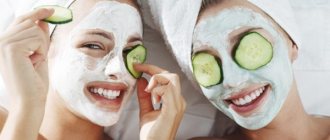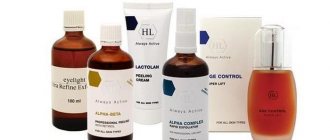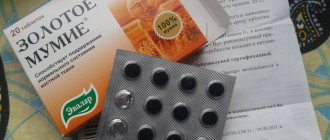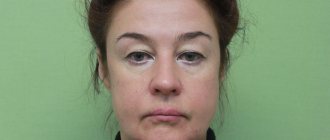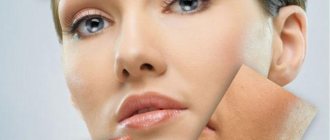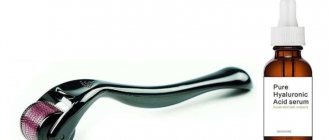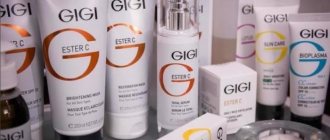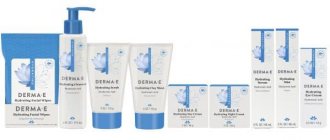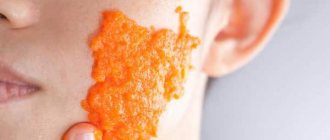Companies invest billions of dollars and euros in the development of high-tech cosmetics production. Not only achieving maximum results, but also a tribute to fashion forces manufacturers and marketers to invent new terms in cosmetology and provide the most scientific basis for this. Or is it the other way around? It can be quite difficult for a practicing doctor, cosmetologist and his patient to understand the cycle of terms, because sometimes concepts are successfully mimicked and go out of use, unable to withstand competition or advertising wars.
What is nanotechnology?
On the territory of the Russian Federation, the concept of nanotechnology is established in GOST R 55416-2013 “Nanotechnologies. Part 1. Basic terms and definitions.”
According to the “Concept for the development of work in the field of nanotechnology in the Russian Federation,” nanotechnology is defined as a set of methods and techniques that provide the ability to create and modify objects in a controlled manner, including components with dimensions less than 100 nm , at least in one dimension, and as a result of this, obtaining fundamentally new qualities that allow their integration into fully functioning systems of a larger scale.
Among the technologies used to develop cosmeceuticals , nanotechnology occupies a special place. It is believed that smaller active particles are more readily absorbed by the skin and act faster and more effectively on the problem that needs to be solved.
The main purposes of using nanoparticles in cosmeceuticals are:
- increasing the stability of cosmetic ingredients (for example, vitamins, unsaturated fatty acids and antioxidants) when enclosed within nanoparticles;
- more effective skin protection from ultraviolet radiation, increasing the visual appeal of products (for example, sunscreens with extremely small particles of mineral active ingredients are applied without leaving white marks on the skin);
- targeted action of the active ingredient on the required area and controlled release of active ingredients for a longer lasting effect of the product.
All this sounds incredibly attractive, but let’s figure out which delivery methods we know historically, which ones are truly innovative, and whether there are pitfalls in the direction called “Nanocosmetics”.
Liposomes in cosmetics
The first liposomes were created to protect drugs from destruction when they were introduced into the body through injections. They have been used in medicine since 1971.
In the 80s of the 20th century, well-known companies in the cosmetics industry, such as L'Oreal and Christian Dior, became interested in liposomes and began producing liposomal cosmetics.
Liposomal gels and creams with liposomes containing coenzymes and anti-aging enzymes were recognized as one of the most effective at that time.
Creams with liposomes for the face - photo
When they reach the deep layers of the skin, they participate in slowing down the aging process of the skin, promoting its regeneration, moisturizing and smoothing out fine wrinkles that form after 25-30 years and are the first signs of skin aging.
The use of drugs and cosmetics with melanin-containing liposomes in laser therapy and phototherapy in fair-haired and fair-haired people helps to quickly achieve effective results due to the delivery of melanin to the hair follicles.
The use of such products with different compositions is also recommended after cosmetic procedures such as mesotherapy, peeling, dermabrasion during the remission stage for acne and atopic dermatitis.
Liposomal creams and gels with anti-aging effect, lotions for and after shaving, sunscreens, perfumes, medicinal and decorative cosmetics with lipids and liposomes are produced by different companies:
- In France - BioEurope and L'Oreal,
- In Japan Kanebo,
- In Russia, NPO Pulse and Nizar Laboratory,
- and many more others.
Typically, liposuction cosmetics are packaged in tubes with a narrow neck, which protects the product from contact with air. If the product is in a jar, it quickly becomes rancid and the risk of microbiological infection increases.
Liposomes
The concept of liposomes was first mentioned in the literature in 1963, and their effectiveness for the delivery of topical drugs was proven in the early 1980s. Liposomes are spherical closed particles consisting of a phospholipid shell and a solution contained inside it. Their sizes vary from 20nm to several hundred micrometers. Liposomes are often used in cosmeceuticals because they are completely biocompatible, non-toxic, and also represent a universal biodegradable vehicle for the delivery of active ingredients.
In addition, liposomes protect the drug they contain from environmental influences and can be used to deliver hydrophobic and hydrophilic agents, such as vitamins or other molecules necessary for epidermal regeneration. One of the main components of liposomes is phosphatidylcholine, which, due to its softening and caring properties, can often be found in cosmetics for the skin (moisturizers, lotions, creams, etc.) and hair (shampoos, conditioners). Certain active ingredients (eg, vitamins A, E and K) and antioxidants (eg, carotenoids, lycopene and coenzyme Q10) when encapsulated in liposomes gain additional physical and chemical stability in aqueous solution.
What are liposomes
Many cosmetic products that are considered among the best are not able to penetrate deep into the skin. Most of them simply create a protective film on the face, which improves the appearance, but does not eliminate the problem. The active components cannot penetrate deep into the epidermis, which means that their effect is insignificant; in addition, they are constantly exposed to ultraviolet radiation and interact with other components of the product.
Typically, this reaction contributes to the formation of allergies and irritation. And although a cosmetic product can only partially slow down aging, with prolonged use it can cause a lot of unpleasant consequences.
Using liposomes, you can achieve real results in rejuvenation, because such a cosmetic product is able to penetrate into the deep layers of the skin, and the substances affect the structure and function of the horny plates, eliminating the fat layer.
Liposomes themselves are spherical formations (bubbles or vesicles) that consist of phospholipids. They have a hydrophilic environment inside, and when they get under the skin, they decompose and divide into fragments, thereby covering large areas of the skin.
Liposomes can penetrate even the deepest layers of the skin, which gives them an advantage over other products. In addition, the product can be used to combat allergies and various irritations. In some cases, the internal environment of lipids can be filled with various useful substances.
Solid lipid nanoparticles
Solid lipid nanoparticles (SLNPs) are submicron particles with a size of 50-1000 nm, consisting of lipids present in water or an aqueous solution of surfactants. TLNs are actively used in cosmeceuticals for several reasons. Firstly, they are non-toxic and completely biodegradable. Secondly, due to their small size, TLNs penetrate the skin well. In addition, it has been proven that TLNs have the properties of a physical UV filter, and therefore can be used to develop effective sunscreens with a minimum number of side effects. According to in vivo studies, skin hydration increases by 31% over 4 weeks when using a traditional cream with the addition of 4% TLN. In addition, solid lipid nanoparticles can be successfully used as a vehicle for perfume products. When a fragrance is included in the TLN, the perfume exhibits a longer-lasting effect.
Effect on skin
Phospholipids are part of a living cell, namely the membrane. But they play a minor role in the stratum corneum; rather, fatty acids, cholesterol and ceramides, which are able to penetrate into the deepest layers of the epidermis, play a major role.
Phospholipids can increase the permeability of the upper layer of the dermis. The effect is that the skin is able to absorb more positive substances. In this case, products with liposomes initially have an accumulation effect, after which they penetrate deep into the epidermis. Using a transdermal cream with liposomes, you can influence the ability of the epidermis to naturally regenerate.
Each phosphatidylcholine, regardless of origin, has a high concentration of fatty acids and is also capable of saturating the skin with linoleic acid. Most often, fatty acids additionally soften the skin, in addition to affecting the structure of the epidermis.
Cosmetics with liposomes are considered medicinal and require special application, which is best done by a cosmetologist. The effect of such cosmetics on the skin is very great; in addition to moisturizing, the products rejuvenate and give the skin radiance and youth.
Nanocrystals
Nanocrystals are a collection of several hundred to thousands of atoms, reaching sizes of 10-400 nm and are used to deliver poorly soluble active ingredients. It has been scientifically proven that, for example, the nanocrystalline form of rutin is 500 times more bioactive than the water-soluble glycoside rutin. A nanosuspension of 5% rutin in the form of insoluble nanocrystals was applied to the skin of volunteers and compared in terms of photoprotection efficiency with a 5% solution of rutin glycoside. Despite the 500 times lower concentration of rutin in the nanocrystalline suspension, it demonstrated 25% greater effectiveness in protecting the skin from ultraviolet radiation.
Types of liposomes
The classification of these formations is based on several characteristics.
Based on the number of lipid layers they are divided into:
- Multilamellar, that is, multilayered, formed by tens and even hundreds of double layers.
- Monolamellar large.
- Monolamellar small.
The affiliation of liposomes to one type or another may vary, since, despite the relative simplicity of their structure, they are capable of changing structure and size.
But no matter what metamorphoses occur with lipid formations, this does not affect their properties in any way.
Changes in the state of liposomes occur as these structures move through the human body. For example, when moving deeper into the skin, the balls break up into fragments. It is for this reason that the solutions that are stored in the center of these formations are released. The ball disintegrated, the solution poured out, the function was completed.
Receipt methods
The invention of liposomes made a kind of revolution in medicine and cosmetology. They are so small that they can overcome the biological protection of the skin, passing through the epidermis.
- They are obtained by forming a mixture of the desired biologically active substances with solvents, powder fillers and phospholipids.
- There is another method for producing liposomes - this is the treatment of phospholipid solutions with ultrasonic radiation.
The latter method greatly simplifies the production process of drugs containing lysosomes and improves the transfer of active substances into capsules.
In addition, ultrasonic processing of phospholipids reduces production costs, which affects the prices of the final products.
Cubosomes
A cubosome is a submicron lipid-formed particle in a continuous cubic phase. The applicability of cubosomes in personal care products is still the subject of scientific research. For example, L'Oreal and Nivea are trying to use cubosomes as stabilizers for oil-in-water emulsions and pollutant absorbents in cosmeceuticals.
Source of vitamin C.
For internal use, sources are food and special additives. For external use – professional cosmetics. Why professional?
It is possible to ensure maximum stability and good digestibility of L-ascorbic acid in the compositions of professional cosmetics, and not in cosmetics for the mass market. You can read about choosing working cosmetics in the article – Professional skincare cosmetics.
Food source.
Contrary to popular belief, the first place in L-ascorbic acid content is occupied by rose hips, not lemon. Superiority in concentration, almost thirty times, 1500 mg. versus 60 mg. per 100 gr. product. After rose hips follow: bell pepper - 250 mg, sea buckthorn - 200 mg, parsley and dill - 150 and 100 mg. respectively.
Cosmetic source for skin.
Cosmetics containing stable or liposomal forms of ascorbic acid.
Niosomes
Niosomes are vesicles consisting of a water cavity and a shell of nonionic surfactant in the lamellar phase. Compared to liposomes, niosomes are cheaper to produce, provide a more reliable “trap” for active ingredients, have increased chemical stability and higher penetration ability. Niosomes are an effective external transport vehicle for active ingredients, have the ability to prolong their action in the epidermis and reduce their absorption by the body. With the help of niosomes, it is also possible to achieve the effect of targeted action of active ingredients.
Properties of liposomes
Liposomes are used to form a transdermal therapeutic system.
They have the following properties:
- The ability to deliver several substances with complex molecules that are different in structure and properties at once.
- The ability to freely integrate into lipid membrane layers, merging with skin tissue.
- Formation of a structure similar to the structure of cell membranes.
These properties can be used to deliver substances contained in a liposome to the desired tissues and cells.
It is only necessary to place the desired substance in the liposome, and then direct this small container to its destination.
There are 2 options for moving active substances using liposomes:
- Transfollicular.
- Transepidermal.
In the first case, liposomes move in the sweat glands and hair follicles. In the second, they pass through the surface layers of the skin.
The unusual properties of liposomes are used to produce bath foam as a kind of body cosmetics. A special powder is poured into water, after which liposomes are immediately formed and come into contact with the skin of the body.
Such procedures are usually used to restore skin with increased sensitivity and high levels of dehydration.
Penetration of nanoparticles into the skin
There are many products with nanoparticles on the market. Some of these products simply use the fancy word “nano-” for promotion, but some actually contain active substances enclosed in special carriers to enhance their bioavailability.
And the question of their potential danger remains open.
The mechanism of interaction of nanoparticles with the skin depends on their physicochemical characteristics, the type of cosmetic product in which they are included, and the condition of the consumer’s skin.
In general, nanoparticles can be divided into two groups:
- soluble and/or biodegradable (liposomes and nanoemulsions);
- insoluble and/or non-biodegradable (titanium dioxide, fullerenes and quantum dots).
Rapid absorption of nanoparticles by the epidermis occurs only at certain stages of skin preparation.
The best cosmetic products with liposomes
Cream with liposomes Liposomes. The ingredients perfectly nourish and moisturize the skin. Some women note effectiveness after 2-3 weeks of application. Significantly reduces the number of wrinkles. It is considered the best of cosmetics, but requires proper storage;
Mirielle cream. An inexpensive product that can easily compete with foreign manufacturers. Well eliminates signs of aging in women aged 35-40 years. In addition, it makes the skin elastic, evens out the color and adds radiance to the skin. It is also used after laser therapy and beauty injections to enhance the effect;
Most Popular: Selecting the Best Drugstore Creams for Dry Skin
Creme Reparatrice. A cream with a light texture that moisturizes and eliminates wrinkles. In addition, it contains many active components that give a positive effect. Also, it is available in several versions using various vitamin supplements and natural oils;
Cream Exclusive, a Polish manufacturer that has proven itself well. At the cellular level, it is able to restore the skin with the help of salmon caviar extract. Can be used as day or night, but recommended for women over 70 years old. This is due to the fact that there are a large number of liposomes in the composition and can affect deep wrinkles;
Serum or gel with liposomes Liposome Vitamin. Mini version that allows you to use the product while traveling. This product is also used in laser therapy and various cosmetic procedures;
Crema Gel At Liposomi, with active substances that moisturize the skin and retain moisture, thereby preventing the skin from drying out;
Serum RX Complex Serum. Restores skin at the cellular level. The serum is supplemented with vitamin C and E, which enhance effectiveness. The course of use is up to 2 months, after which you need to take a break and enjoy the result.
When choosing cosmetic products, you must read the ingredients. Typically, creams or serums should contain at least 60% liposomes in the composition. Products containing vitamin E will have a greater effect.
conclusions
1. Nanoparticles used in cosmeceuticals can be toxic if they enter the bloodstream.
2. It is necessary to use nanocosmetics only on intact skin. The results of most studies indicate that when applied to the skin, nanoparticles penetrate internally mainly through the transfollicular route or through the pores[13].
3. Reducing the molecular weight and size of transport systems of active ingredients in cosmetology increases the bioavailability of active ingredients and sets a new vector in the development of cosmeceuticals.
4. Cosmeceuticals are increasingly approaching pharmaceuticals, and a professional cosmetologist should prescribe cosmetic products that use nanotechnology in production, taking into account many different factors.
5. Marketing wars sometimes discredit the promising direction of transcutaneous delivery of active ingredients and, thus, doctors and patients must adequately evaluate the declared effects of external agents, not opposing cosmetics to invasive and minimally invasive procedures, but successfully complementing them.
Vitamin C, one of the best for skin - why?
This asset can be called the most multifunctional, and maybe one of the best cosmetic components.
The content of liposomal vitamin C in cosmetics determines its effectiveness and efficiency.
Let us list the sought-after properties of this asset that heal the skin.
Antioxidant activity.
Ascorbinicum is a powerful antioxidant and also restores the antioxidant potential of another antioxidant - tocopherol (vitamin E). By neutralizing free radicals, tocopherol loses its fighting properties, but in the presence of L-ascorbic acid, this ability is restored.
The combined antioxidant effect of these two vitamins has a synergistic effect. There is no common understanding in the scientific community of the causes and mechanisms of aging. But all pundits agree that oxidative stress and free radicals are a determining factor in aging.
Anti-aging effect.
L-ascorbic acid promotes collagen synthesis. Collagen and elastin fibers form the framework of the dermis. The quality of collagen affects skin elasticity. Unfortunately, with age-related changes, the skin's natural ability to synthesize collagen fibers weakens and it needs help.
The use of vitamin C in cosmetics can improve collagen synthesis, the quality of the structure of the dermis, and give the skin greater elasticity. Facial aging is determined not only by changes in the epidermis and dermis. Age-related changes also depend on the amount of fatty tissue and muscle configuration. Age-related changes in the epidermis, dermis, subcutaneous fat and facial muscles determine the type of aging. The choice of cosmetics may depend on the type of aging. There are several types and types of facial aging, more details - How facial skin ages.
Whitening pigment spots.
L-ascorbic acid inhibits melanin synthesis. Melanin is a pigment that colors the skin and forms pigmentation. Ascorbinicum affects melanogenesis, reduces and corrects age spots, so it is often used in cosmetics to correct pigmentation.
Prevention of rosacea.
Ascorbinicum improves the quality of capillaries. It has a beneficial effect on the walls of blood vessels, reducing their permeability. This property is used in cosmetics to prevent rosacea.
Elimination of puffiness.
Ascorbinicum improves microcirculation. There is an area on the face where drainage and microcirculation are significant factors affecting appearance. This is the skin around the eyes, which has its own specifics and needs special cosmetics. Improving microcirculation reduces swelling in this area of the face.
Reducing signs of skin photoaging.
L-ascorbic acid improves the condition of photodamaged skin. Reduces the number and severity of wrinkles, evens out tone, improves complexion, and reduces roughness.
Literature
- A. D. Bangham, “Physical structure and behavior of lipids and lipid enzymes,” Advances in Lipid Research, vol. 64, pp. 65–104, 1963.
- M. Mezei and V. Gulasekharam, “Liposomes—a selective drug delivery system for the topical route of administration.” I. Lotion dosage form,” Life Sciences, vol. 26, no. 18, pp. 1473–1477, 1980.
- IP Kaur and R. Agrawal, “Nanotechnology: a new paradigm in cosmeceuticals,” Recent Patents on Drug Delivery & Formulation, vol. 1, no. 2, pp. 171–182, 2007
- S. A. Wissing, K. Mader, and R. H. Muller, “Solid lipid nanoparticles (SLN) as a novel carrier system offering extended release of the perfume Allure (Chanel),” in Proceedings of the International Symposium on Controlled Release of Bioactive Materials, vol. 27, pp. 311–312, Paris, France, 2000.
- Z. Mei, Q. Wu, S. Hu, X. Li, and X. Yang, “Triptolide loaded solid lipid nanoparticle hydrogel for topical application,” Drug Development and Industrial Pharmacy, vol. 31,no. 2, pp. 161–168, 2005.
- E. B. Souto and R. H. M¨uller, “Cosmetic features and applications of lipid nanoparticles (SLN, NLC),” International Journal of Cosmetic Science, vol. 30, no. 3, pp. 157–165, 2008.
- J. Sakamoto, A. Annapragada, P. Decuzzi, and M. Ferrari, “Antibiological barrier nanovector technology for cancer applications,” Expert Opinion on Drug Delivery, vol. 4, no. 4, pp. 359–369, 2007.
- S. Anisha, S. P. Kumar, G. V. Kumar, and G. Garima, “Approaches used for penetration enhancement in transdermal drug delivery system,” International Journal of Pharmaceutical Sciences, vol. 2, no. 3, pp. 708–716, 2010.
- A. Sankhyan and P. Pawar, “Recent trends in noisy as vesicular drug delivery system,” Journal of Applied Pharmaceutical Science, vol. 2, pp. 20–32, 2012.
- R. Toll, U. Jacobi, H. Richter, J. Lademann, H. Schaefer, and U. Blume-Peytavi, “Penetration profile of microspheres in follicular targeting of terminal hair follicles,” Journal of Investigative Dermatology, vol. 123, no. 1, pp. 168–176, 2004.
- S. J. Christopher, L. Campbell, L. R. Contreras-Rojas et al., “Objective assessment of nanoparticle disposition in mammalian skin after topical exposure,” Journal of Controlled Release, vol. 162, no. 1, pp. 201–207, 2012.
- B. Gulson, M. Mccall, M. Korsch et al., “Small amounts of zinc from zinc oxide particles in sunscreens applied outdoors are absorbed through human skin,” Toxicological Sciences, vol. 118, no. 1, pp. 140–149, 2010.
- B. Gulson, M. McCall, L. Gomez, M. Korsch et al., “Dermal absorption of ZnOparticles from sunscreens applied to humans at the beach,” in International Conference on Nanoscience and Nanotechnology, Sydney, Australia, February 2010.
- M. Senzui, T. Tamura, K. Miura, Y. Ikarashi, Y. Watanabe, and M. Fujii, “Study on penetration of titanium dioxide (TiO2) nanoparticles into intact and damaged skin in vitro,” Journal of Toxicological Sciences, vol. 35, no. 1, pp. 107–113, 2010.
- T. Butz, “Dermal penetration of nanoparticles: what we know and what we don't. Cosmetic. Science Conference Proceedings, Munich,” SO¨FWJournal, vol. 135, no. 4, pp. 8–10, 2009.
- P. Filipe, J. N. Silva, R. Silva et al., “Stratum corneum is an effective barrier to TiO2 and ZnO nanoparticle percutaneous absorption,” Skin Pharmacology and Physiology, vol. 22, no. 5, pp. 266–275, 2009.
- A. Mavon, C. Miquel, O. Lejeune, B. Payre, and P. Moretto, “In vitro percutaneous absorption and in vivo stratum corneum distribution of an organic and a mineral sunscreen,” Skin Pharmacology and Physiology, vol. 20, no. 1, pp. 10–20, 2006.
- F. Pfl¨ucker, V. Wendel, H. Hohenberg et al., “The human stratum corneum layer: an effective barrier against dermal uptake of different forms of topically applied micronised titanium dioxide,” Skin Pharmacology and Applied Skin Physiology, vol. 14, no. 1, pp. 92–97, 2001.
- F. Menzel, T. Reinert, J. Vogt, and T. Butz, “Investigations of percutaneous uptake of ultrafine TiO2 particles at the high energy ion nanoprobe LIPSION,” Nuclear Instruments and Methods in Physics Research, Section B: Beam Interactions with Materials and Atoms, vol. 219-220, no. 1-4, pp. 82–86, 2004.
- J. Lademann, H.-J. Weigmann, C. Rickmeyer et al., “Penetration of titanium dioxide microparticles in a sunscreen formulation into the horny layer and the follicular orifice,” Skin Pharmacology and Applied Skin Physiology, vol. 12, no. 5, pp. 247–256, 1999.
Phosphatidylcholine
In the functioning of the stratum corneum of the skin, which serves as protection from external physical influences, phospholipids - and phosphatidylcholine in particular - play a less important role. Only traces of phospholipids are found in lipid bilayers, while the main components are free fatty acids, cholesterol, ceramides, triglycerides and hydrocarbons. However, in the deeper layers of the epidermis, phosphatidylcholine is one of the most important components of all biological membranes, especially plasma cell membranes. In addition, phosphatidylcholine is indirectly involved in the conversion of ceramides to sphingomyelin. In this case, phosphatidylcholine, preventing the increase in the amount of ceramides in cells, prolongs their life in apoptosis (Fig. 1).
Fig. 1 Mediator role of phosphatidylcholine in lipid biosynthesis during barrier maturation.
Explanations for the figure:
In living keratinocytes, phosphatidylcholine is responsible for the conversion of ceramides into sphingomyelins, and an increase in the level of ceramides within living cells is a sign of cellular aging.
The composition of human phosphatidylcholine and plant phosphatidylcholine is represented by fatty acids, among which unsaturated fatty acids predominate. Soy phosphatidylcholine, the most commonly used in cosmetic preparations, contains up to 70% linoleic acid in the total fatty acids. The phase transition temperature of soybean phosphatidylcholine in water-containing systems is below 00C. This is its ability to liquefy lipid bilayers of the stratum corneum, which is characterized by the degree of increase in transepidermal water loss (TEWL) after short-term exposure. The slight increase in TEWL coincides with the penetration of phosphatidylcholine and similar active agents. Due to its high linoleic acid content and high penetrating power, soy phosphatidylcholine quickly delivers linoleic acid to the skin and can be used to successfully treat acne.
By binding tightly to surface proteins of the epidermis (such as keratin), phosphatidylcholine produces conditioning and softening effects that have been well known since the early days of skin care product development. For example, shampoos used to contain egg yolk, which softened the hair and protected it from static electricity. Egg yolk is rich in lecithin, the main component of which is phosphatidylcholine.
In this case, it does not matter in what form phosphatidylcholine is included in the drug. When preparing phosphatidylcholine, bilayer-containing structures such as liposomes will almost always be formed, since this is the most natural form of organization of this substance. For example, phosphatidylcholine, when given a large amount of water, spontaneously transforms into liposomes, which are stabilized by the addition of low concentrations of salts or water-soluble organic compounds such as urea. On the other hand, it is known that non-encapsulated substances penetrate much more easily through the stratum corneum pre-treated with phosphatidylcholine. Therefore, liposomes are not a prerequisite for the manifestation of the functional properties of phosphatidylcholine, but their use is convenient, since working with pure phosphatidylcholine requires a lot of experience, and sometimes even patience.
Since phosphatidylcholine is known to increase membrane permeability, this property is usually associated with liposomes. Liposomes are vesicles that help facilitate the transfer of cosmetic agents into the stratum corneum. Under these conditions, the stratum corneum acts as a depot for these agents. Systemic studies of active drugs have shown that an increase in absorbency does not mean an increase in permeability. Phosphatidylcholine often slows the permeation of active agents and prevents a sharp increase in their concentration at the beginning of use. There is a longer passage of substances from the stratum corneum. This property makes phosphatidylcholine and liposomes extremely attractive when using vitamins, multivitamins and other substances that affect the regenerative ability of the basal cells of the epidermis.
On the other hand, liposomes consisting of unsaturated phosphatidylcholine should be used with great caution, since they do not improve the natural barrier function of the skin, except for their indirect participation in the formation of ceramide I. Ceramide I contains linoleic acid and is one of the important activators of barrier function substances. In preparations intended to protect the skin, fully hydrogenated phosphatidylcholine should be used instead of unsaturated phosphatidylcholine (Fig. 2).
Rice. 2. Hydrogenated phosphatidylcholine (n=14, 16)
Similar to ceramides, hydrogenated phosphatidylcholine is able to stabilize the normal level of TEWL (transepidermal water loss) of the stratum corneum after exposure to hydrophilic or lipophilic substances. Table 1 presents the main properties of unsaturated and hydrogenated phosphatidylcholine. Hydrogenated phosphatidylcholine, derived from soy, contains mainly palmitic and stearic acids. Since unsaturated and saturated phosphatidylcholine have specific properties, it makes sense to combine them in one cosmetic or dermatological product.
Abbreviations: TEWL – transepidermal water loss, CIR – Cosmetic Ingredient Review (organization for assessing the safety of components used in cosmetics)
Liposomes
Liposomes are spherical vesicles whose membranes consist of one (single-layer) or more (multi-layer) phosphatidicholine bilayers. Sometimes, especially in patents, they speak not of liposomes, but of “vesicles with an internal aqueous phase.” Depending on the preparation process, vesicles can differ in both size (diameter ranging from 15 to 3500 nm) and shape (single and connected particles). The greatest stability of liposomes is observed in the range of 100 – 300 nm in pure aqueous dispersions of highly enriched (80-100%) soybean phosphatidylcholine.
Effective preparations are pure dispersions of liposomes with lipophilic additives on the sphere membranes and/or hydrophilic additives on the internal and external aqueous phases within the range of their load-bearing capacity. Research has been conducted to improve the ability of liposomes to encapsulate lipids as consumers become accustomed to lipid-rich creams. Attempts have been made to introduce higher lipid content into liposome dispersions and additional emulsifiers have been added for stabilization. Today it is known that the compatibility of liposomes and emulsifiers is limited. Moreover, additional emulsifiers have a weakening effect on the barrier affinity of phosphatidylcholine. They flush out phosphatidylcholine and lipids from the skin during cleansing. There is only one rational way out of this situation - to use nanoparticles (“nanoemulsions”, “nanodispersions”) consisting of phosphatidylcholine and lipids instead of liposomes. It has been established that at the moment when the ability of bilayers to incorporate lipids is exhausted, oil droplets begin to connect with liposomes [8]. Further increasing the lipid/phosphatidylcholine ratio and using high-pressure homogenizers leads to the formation of nanoparticles. The nanoparticles consist of oil droplets surrounded by a monolayer of phosphatidylcholine. The advantage of nanoparticles is that they allow the introduction of a larger amount of lipids into the composition, while remaining stable, and do not require the introduction of additional emulsifiers.
Liposome dispersions based on unsaturated phosphatidylcholine are unstable and quickly oxidize. Like linoleic esters and linoleic diglycerides, these dispersions must be stabilized with antioxidants. From the point of view of naturalness, it is better to use a complex of vitamins C and E (respectively, their derivatives are acetates and palmitates). In some cases, phosphatidylcholine and urea demonstrate the ability to stabilize each other [9,10].
Unsaturated phosphatidylcholine can be replaced by a saturated one, such as hydrogenated soy phosphatidylcholine. Since the phase transition temperature of hydrogenated phosphatidylcholine is much higher, the preparation of liposomes based on them is a technologically more complex process and limits their pharmacological use.
A new development in the field of cosmetics using hydrogenated soy phosphatidylcholine is DMS technology (Derma Membrane Structure) [11]. DMS are conventional creams containing hydrogenated soy phosphatidylcholine, sebum-compatible medium chain triglycerides (MCT), shea butter and squalane. Along with liposome and nanoparticle dispersions, DMSs are another way to combine phosphatidylcholine with hydrophilic and lipophilic moieties without the use of additional emulsifiers. DMS are resistant to water and sweat and are therefore suitable for skin protection, creating sunscreens without the addition of silicones and/or mineral oils. DMS can be easily transformed into other end products by simple mixing with liquid lipids and/or aqueous phases at room temperature.
Rice. 3. Preparations with phosphatidylcholine without additional emulsifiers
As noted previously, DMS are intended to protect the skin, however, the addition of nanoparticles and/or liposome dispersions enriches the DMS with unsaturated phosphatidylcholine containing linoleic acid. The resulting product has a creamy consistency, is stable and non-comedogenic. The effect of creams with DMS on moisturizing, softening and toning the skin lasts for several days after use.
Liposomes, nanoparticles and DMS require the use of preservatives. Difficulties may arise here, since phosphatidylcholine (lecithin) deactivates most traditional preservatives [12]. On the other hand, penetration of preservatives into the skin should be avoided, as they can cause irritation and sensitization of the skin. In this situation, glycols such as propylene glycol, glycerin, butylene glycol, pentylene glycol, hexylene glycol, sorbitol and combinations thereof are preferred. Unlike ethanol, the use of which is limited by concentration, these polyols also have a moisturizing effect.
At the beginning of liposome development, phosphatidylcholine was replaced by polyglycerols and other synthetic derivatives due to its hydrolytic instability in aqueous systems over long periods of time and at high temperatures. Phosphatidylcholine breaks down into lysophosphatidylcholine and free fatty acids. The cleavage of the glyceride bond occurs mainly at a pH above 7, so preparations with a pH in the range from 5.5 to 7 are quite stable for most applications. The hydrolysis of phosphatidylcholine is also affected by the amount of additional surfactants. This is another reason for using liposome dispersions without additional emulsifiers.
As noted above, liposome dispersions are a very convenient way to incorporate phosphatidylcholine into cosmetic preparations to obtain the fullest spectrum of functionality. Pre-liposomal liquid phases containing phosphatidylcholine up to 20% or more are commercially available [13]. There is also work on the use of instant liposomes in combination with carbohydrates in the form of powders [1]. Oils that form liposome dispersions without additional emulsifiers are also of interest [14]. These drugs are based on a mixture of phosphatidylcholine, triglycerides and alcohol. Liposomes form spontaneously when mixtures are poured into water. Such liposomes have a high affinity for surface lipids of the skin, and can be used in the care of dehydrated and sensitive skin. Numerous methods for preparing liposomes have been described [1].
Most experts working in the field of liposome dispersions today agree that liposomes do not penetrate the skin in intact vesicles and are not absorbed into the skin. According to modern concepts, liposomes, as a rule, become deformed and fragmented. Therefore, their size, shape and multilayer structure do not matter in application. What matters is the chemical composition of the entire drug.
The areas of application of phosphatidylcholine arise from its multifunctional properties. Preparations with unsaturated phosphatidylcholine are used to support skin regeneration processes, combat aging, prevent acne and deliver other active agents such as vitamins and their derivatives to the skin. Preparations with hydrogenated phosphatidylcholine are used to protect the skin, including from the sun [15]. Figure 4 shows the selection of the main components for the preparation of “natural” formulations that will be compatible with the stratum corneum, sebum components and their functions.
Rice. 4. Main components of “natural” drugs
Figure captions: horny layer - horny layer, deeper skin layers - deep layers of the skin, PC - phosphatidylcholine, PC-H - hydrogenated phosphatidylcholine, MCT-medium chain triglycerides, SPF - sun protection factor, NMF - natural moisturizing factor, MeX - mineral salts , AA - active agents, barrier - barrier, sebum - sebum, sun protection - sun protection, skin moisturizing - skin moisturizing, gradient of mineral salts - gradient of mineral salts, linoleic acid ceramides - linoleic acid ceramides, vitamins - vitamins.
Liposome dispersions are not only an innovative and effective cosmetic product, but also a convenient form for working with phosphatidylcholine. They are successfully used in dermatology for the prevention and treatment of various skin diseases. Table 2 shows the comparative characteristics of liposomes with drugs based on phosphatidylcholine.
Liposomes, nanoparticles and DMS structures are more compatible with the structure of the skin, unlike traditional emulsions commonly used. “Compatibility” means that the drugs do not violate the integrity of the lipid bilayers of the skin and are not washed out during skin cleansing. From the point of view of modern cosmetics strategies, these preparations contain a minimal amount of auxiliary components, which are only an additional burden for the skin. “Compatibility” also means that lipids and hydrophilic agents are introduced into the stratum corneum, while natural conditions remain undisturbed.
It should be noted that phosphatidylcholine does not require use in large concentrations, since experience shows that the drugs remain stable even in small quantities. With repeated use of drugs based on phosphatidylcholine in the stratum corneum, a cumulative effect is observed. Liposomes, nanoparticles and DMS are compatible with each other and in this sense can be used as a modular system. Creating formulations based on them opens up unlimited possibilities and a great future for these drugs.
Literature.
1. Lasic DD. Liposomes and niosomes. In: Rieger MM, Rh ein LD, eds. Surfactants in Cosmetics. 2d ed. New York: Marcel Dekker, 1997:263-283.
2. Wendel A. Lecithins, phospholipids, liposomes in cosmetics, dermatology and in washing and cleansing preparations. Augsburg: Verlag fuer chemische Industrie, 1994.
3. Wendel A. Lecithins, phospholipids, liposomes in cosmetics, dermatology and in washing and cleansing preparations Part II. Augsburg: Verlag fuer chemische Industrie, 1997.
4. Braun-Falco O, Korting HC, Maibach HI, eds. Liposom e Dermatics. Berlin: Springer-Verlag, 1992.
5. Ghyczy M, Nissen HP, Biltz H. The treatment of acne vulgaris by phosphatidylcholine from soybeans, with a high content of linoleic acid. J Appl Cosmetol 1996; 14:137-145.
6. Lautenschlaeger H. Kuehlschmierstoffe und Hautschutz – neue Perspektiven. Mineraloeltechnik 1998(5):1-16.
7. Cosmetic Ingredient Review. Lecithin and Hydrogenated Lecithin. Washington: The Cosmetic, Toiletry, and Fragrance Association, 1996.
8. Lautenschlaeger H. Liposomes in dermatological preparations Part II. Cosmet Toilet 1990; 105 (7):63-72.
9. Nippon Surfactant Kogyo KK, Japanese Patent 199104364104 (1992).
10. Lautenschlaeger, German Patent 4021082 (1990).
11. Kutz G. Galenische Charakterisierung ausgewaehlter Hautpflegeprodukte. Pharmazeutische Zeitung 1997; 142(45):4015-4019.
12. Wallhaeusser KH. Praxis der Sterilisation, Desinfektion – Konservierung. 5th ed. Stuttgart: Georg Thieme Verlag, 1995:43, 394.
13. Roeding J. Properties and characterization of pre-liposome systems. In Braun-Falco O, Korting HC, Maibach HI, eds. Liposome Dermatics. Berlin: Springer-Verlag, 1992:110-117.
14. Lautenschlaeger, German Patent 4021083 (1990).
15. Feingold KR. Permeability barrier homoeostasis: Itsbiochemical basis and regulation. Cosmet Toilet 1997; 112(7):49-59. 16.
Dr. Hans Lautenschlager
Published in Handbook of Cosmetic Science and Technology, p. 155-163
edited by A. O. Barel, M. Paye and H. I. Maibach CRC Press Taylor & Francis Group, Boca Raton 2006
